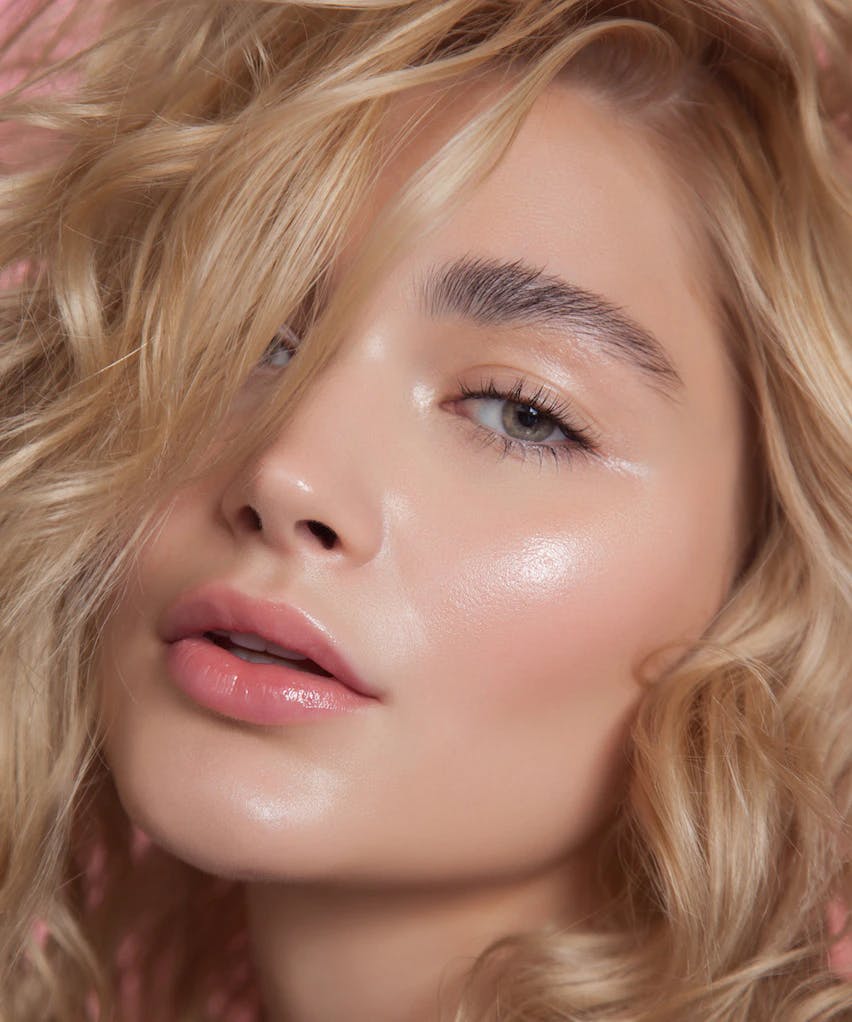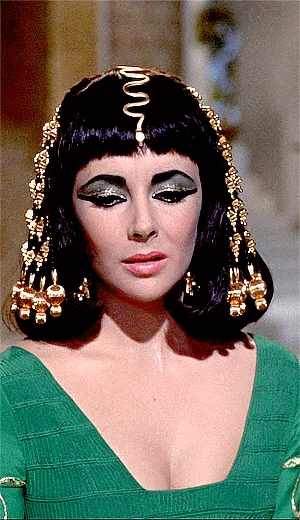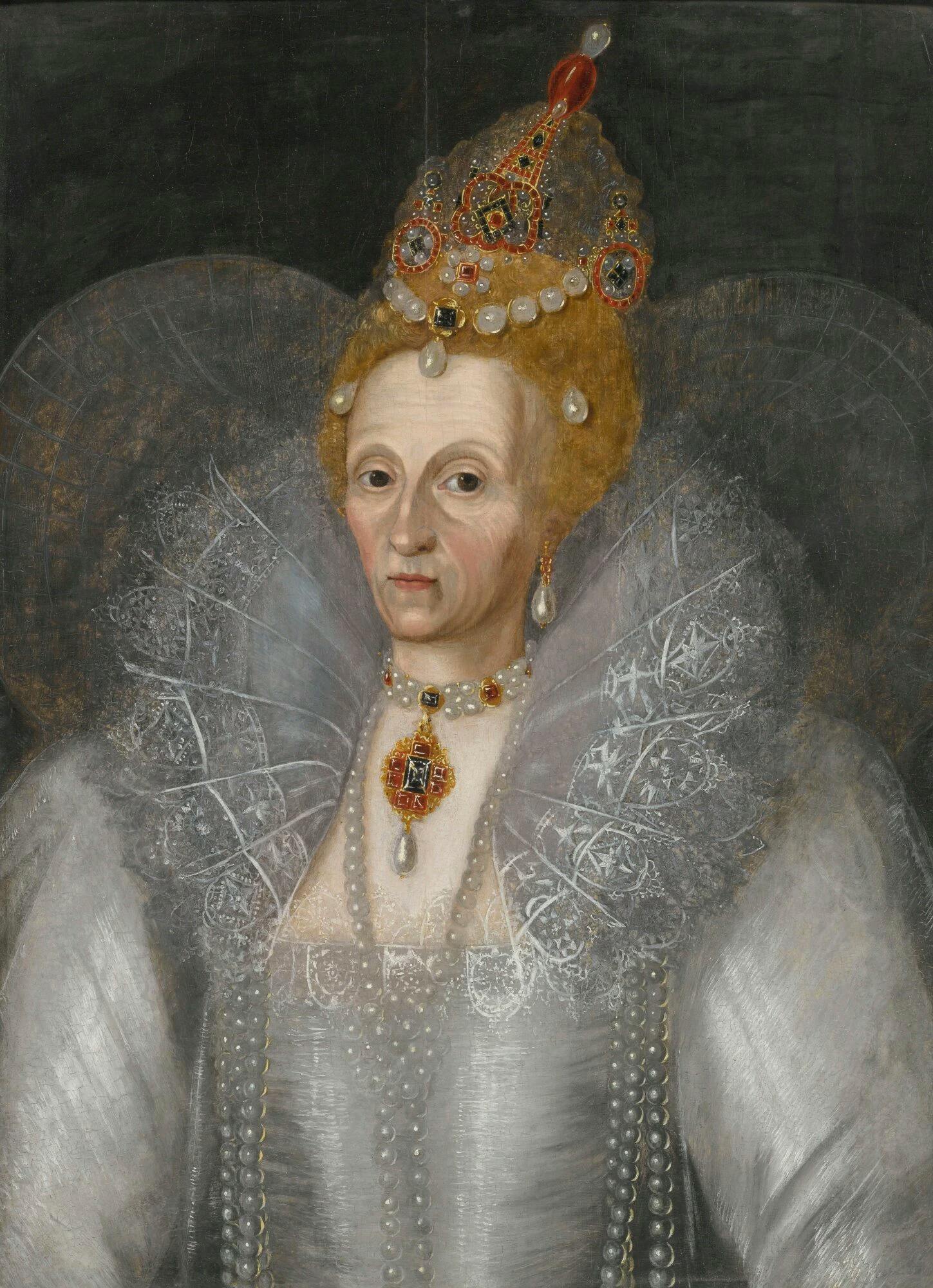Where Did Makeup Come From? The History Behind These 5 Common Makeup Products
Makeup has been around for longer than you probably realize. Here’s how makeup has been worn, celebrated, and rebuked throughout history.

Like many of our modern beauty products, makeup has come a long way from its first usage nearly 6,000 years ago. The first makeup products were worn by Ancient Egyptians and have been seen in Roman, Greek, and Mesopotamic societies alike. However, makeup, or more specifically, women wearing makeup, was not always a celebrated sight.
Makeup’s popularity ebbed and flowed with the culture and customs of the times. In its early stages, cosmetics were seen as sinful or wrong because they altered a person’s God-given face. Those who used makeup were ridiculed in the Bible: “And you, O desolate one, what do you mean that you dress in crimson, that you deck yourself with ornaments of gold, that you enlarge your eyes with paint? In vain you beautify yourself” (Jeremiah 4:30).
However, the catch is that women have forever been encouraged to remove body odor and body hair, which can both be considered acts of changing a woman’s natural appearance. So why, then, has makeup been held to a different standard? In Biblical times, beauty and attractiveness were closely associated with morality, so to decorate yourself with extra materials was considered undesirable because it was not consistent with strong values.
At several points throughout history, makeup was believed to be worse than just vanity; it was considered shameful and despicable to wear in certain cultures because it has long been associated with prostitution. To be associated with a prostitute was one of the worst comparisons that could have been made in ancient and medieval times. Due to this, many women began wearing makeup in secret. You may be surprised to know that some of our favorite makeup products today have had a rocky, lengthy, and even hidden history.
The History of Lipstick
Lips, particularly the feminine lips, have been a symbol of beauty, sex appeal, and romance for centuries. That’s why I wanted to dive in to uncover one of the most iconic and timeless lip looks in history: the red lip. Red lipstick was one of the first and only colors historians have records of ancient people using – whether that’s because of the materials around them or the appeal of the color red is up for debate.
Ancient Egyptians and Mesopotamians used crushed red rocks, melted red wax, or red insects to tint their lips a vibrant hue. Others even used fish scales or red algae to dye their lips. Lipstick was made from materials like these for centuries, and it was not until the last hundred years or so that lipstick began to be made how we recognize it today.
“There is a shade of red for every woman.” – Audrey Hepburn
Red lipstick, in particular, has an interesting background as it relates to women’s history and female empowerment. Depending on the era, location, and context, the meaning of red lipstick can vary drastically, but one thing rings true – it was always perceived as a bold display of confidence no matter who wore it or why. In Egypt, women used red lipstick to display their wealth, but in Greek culture, prostitutes wore bright colors, often red, because it captured male attention and symbolized sex and lust.
In the early twentieth century, red lipstick was worn by women’s suffrage leaders like Elizabeth Cady Stanton to both draw awareness to their efforts at equality and intimidate their male opposers. It did not take long for red lipstick to symbolize women’s rights, freedom, and rebellion, making its reputation fiercely courageous but borderline dangerous.
The History of Mascara
Ancient Egyptians used a material called kohl (or kajal) in their eye makeup. Kohl refers to powder that comes from kohl stone, also called galena. While kohl still exists today and is used in many Indian and Middle Eastern households, it is rarely found in American makeup. Today, kohl has been banned by the FDA due to its high levels of lead that make it dangerous to be handled frequently.
Mascara was popular in Egyptian society because dark eyelashes symbolized chastity and purity, making mascara a desirable cosmetic product. A couple of centuries later, in the Middle Ages, mascara was avoided like the plague. This was because in the Dark Ages, a woman’s most beautiful facial feature was her forehead, and to wear mascara or any kind of eye makeup would draw away from it. According to historians, women used to even pluck their eyebrows and eyelashes to make their foreheads look larger. Mascara, and even having visible eyelashes, came back into style when Queen Elizabeth and her fiery red hair came into the British spotlight.
Variations of mascara existed for several years, but the tube mascara we know and love today did not hit the market until the mid-twentieth century. Now there are dozens of types of mascara, ranging in color, price, size, wand style, and thickness.
The History of Eye Shadow
Like its close relative mascara, eye shadow was also first worn over 6,000 years ago by Egyptians. It, too, was originally made from kohl – and, at times, animal fat or plant materials. However, unlike mascara, eye shadow was not necessarily just a beauty enhancer. It actually served a practical purpose in everyday life. Dark eye shadow was worn to protect Egyptians’ eyes from sunlight and prevent infections. Eye shadow was also noted to be prevalent in Roman, Greek, and Mesopotamic cultures, but like mascara, disappeared in the Medieval Era.

More recently, eye shadow made its rightful comeback in the twentieth century beginning in the Roaring Twenties with flapper girls. Nearly each decade from 1920 on showcased a new eye shadow trend. The 1980s was marked with bright colors and metallic shades, and the 1990s saw lots of glitter. Today, eye shadow is still commonly used, but not as often in an everyday sense. The most common trend is the nude eye shadow look in which tans, browns, and subtle pinks make it look like the woman is barely wearing any makeup.
The History of Powder
Powder has a complex and more secret history than that of other cosmetic products. While lipstick, mascara, and eyeshadow were meant to be noticed on women’s faces, powder was not meant to be discernible to others. The purpose of powder is to cover imperfections or blur uneven skin, making a woman appear ageless and pore-less; to wear such a product meant you had flaws. No woman wanted to look like she wore powder, since this was an admittance of imperfection. For this reason, it was considered shameful to wear powder, yet it was also considered vain to be changing the natural skin too much. No answer was easy when it came to achieving the ideal complexion. Many of our ancestors lived in a world that would not recognize any skin less than perfect as beautiful, so powder, though an embarrassment of a product, was often a necessity.
The first types of powder were made out of chalk, vinegar, finely ground orris roots, or even crushed rice. In medieval times, the ideal skin complexion was pale, smooth, and ageless. Due to the structure of society and the working class, to have a pale complexion meant you were not out in the sun or exposed to the elements, so it came to symbolize wealth. Today, women use powder to reduce shine or dry up oil on their face. However, unlike ancient times, now many women with dry skin avoid using powder as it is sometimes too drying and causes discomfort.
The History of Blush
Blush follows a similar trajectory as mascara and eyeshadow. Its first users were ancient Greek and Roman people. During ancient times, blush was made from red vermillion or crushed mulberries. Its usage was halted during the Middle Ages because porcelain, mattified skin was highly desirable. Women (and men) during these times avoided putting any color or cosmetics on their faces beyond powder. In fact, many women smeared egg whites on their faces to achieve a paler look, and some went so far as to use leeches to suck the color from their complexion.
Like eyeshadow and mascara, blush came back to usage in the Elizabethan era. The Queen’s regularly painted pink cheeks made color in the skin desirable again. Between then and now, blush has gone through waves of popularity and decline, dropping when its toxic chemicals began to harm women, and rising again when it appeared on the cheeks of one of society’s icons. All makeup, including blush, became mass produced beginning in the early 1900s, and soon it became safer, more widespread, and more desirable. From flapper girls in the Roaring Twenties to Marilyn Monroe in the 1950s, blush was found on nearly every woman’s face during these eras.

According to Business Insider, one of the reasons that blush keeps coming back in style is because men are attracted to women who wear blush. Certain sex hormones make women’s faces redder as a sign of fertility, so the sight of blush on a woman’s cheeks has become equated with health, youth, and beauty. Today, blush is still popular and comes in powder, cream, and liquid forms.
Closing Thoughts
Some of today’s most popular makeup products have not always been celebrated throughout chapters of history. Some ancient and medieval societies regarded makeup as vain, selfish, and even plain evil. Out of this narrative came the practice of hiding makeup. And that sentiment still rings true today: When I first began wearing makeup, I was told that “a little goes a long way” and that the best makeup look I could attain was one in which no one could even tell I was wearing it. In modern times, we refer to this as the “no-makeup makeup look.”
This trend has become so popular that cosmetic companies now position their products as being so natural that it looks like skin. Makeup trends will continue to ebb and flow depending on the ways in which cosmetics are perceived in society, but given modern makeup behaviors, cosmetics are only becoming more and more tolerated.
Love Evie? Sign up for our newsletter and get curated content weekly!